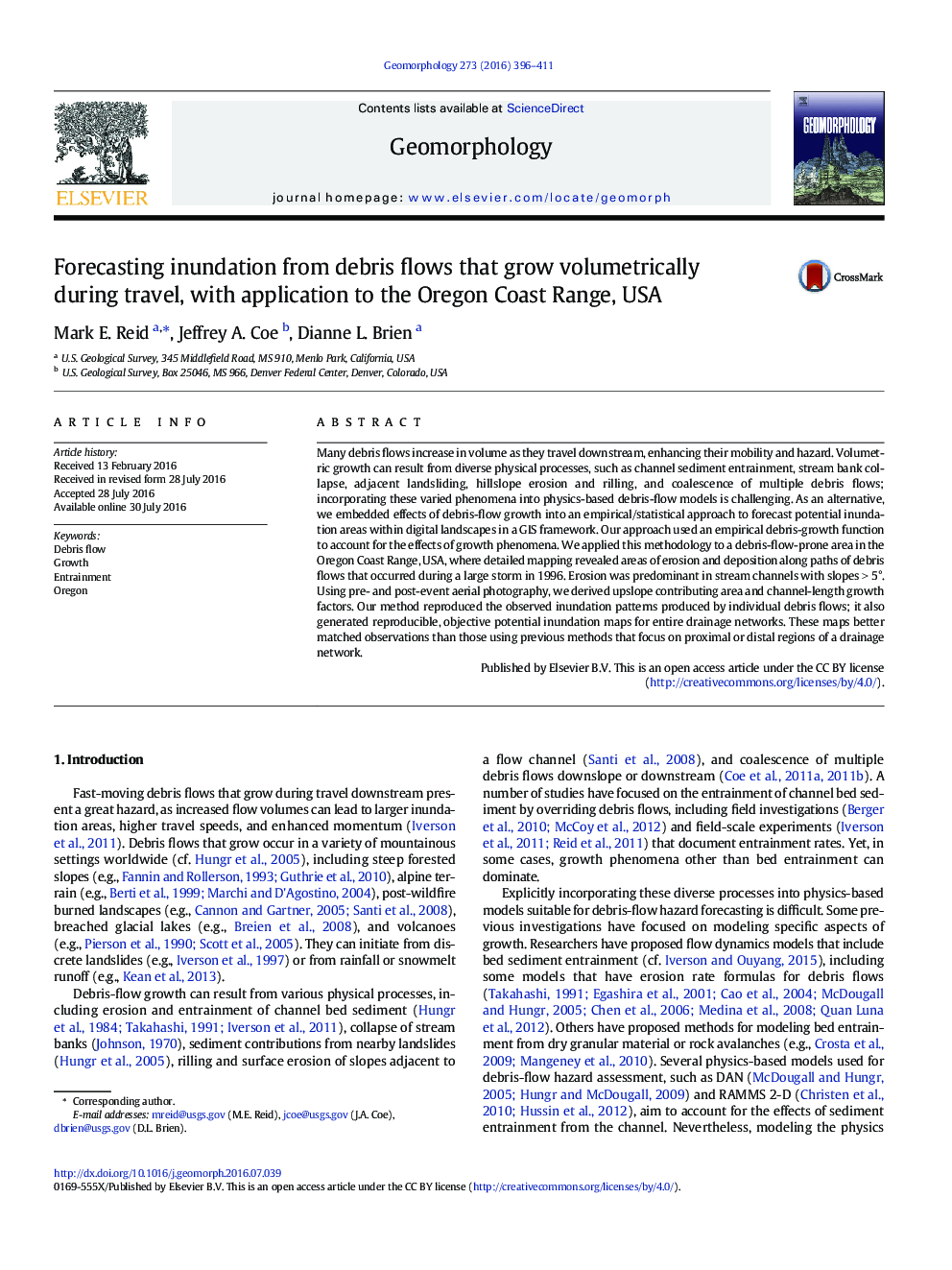| Article ID | Journal | Published Year | Pages | File Type |
|---|---|---|---|---|
| 6431595 | Geomorphology | 2016 | 16 Pages |
â¢Debris flows that grow volumetrically occur worldwide in diverse settings.â¢We present a method to embed debris-flow growth into volume/area inundation relations.â¢An empirical growth function can account for various physical processes.â¢We derive growth functions from detailed analysis after a large storm in Oregon.â¢Our forecasting approach better matches mapped inundation than previous methods.
Many debris flows increase in volume as they travel downstream, enhancing their mobility and hazard. Volumetric growth can result from diverse physical processes, such as channel sediment entrainment, stream bank collapse, adjacent landsliding, hillslope erosion and rilling, and coalescence of multiple debris flows; incorporating these varied phenomena into physics-based debris-flow models is challenging. As an alternative, we embedded effects of debris-flow growth into an empirical/statistical approach to forecast potential inundation areas within digital landscapes in a GIS framework. Our approach used an empirical debris-growth function to account for the effects of growth phenomena. We applied this methodology to a debris-flow-prone area in the Oregon Coast Range, USA, where detailed mapping revealed areas of erosion and deposition along paths of debris flows that occurred during a large storm in 1996. Erosion was predominant in stream channels with slopes > 5°. Using pre- and post-event aerial photography, we derived upslope contributing area and channel-length growth factors. Our method reproduced the observed inundation patterns produced by individual debris flows; it also generated reproducible, objective potential inundation maps for entire drainage networks. These maps better matched observations than those using previous methods that focus on proximal or distal regions of a drainage network.
Graphical abstractDownload high-res image (417KB)Download full-size image
